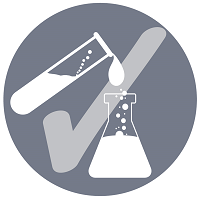Formulation and Delivery
Symposium: Enabling Technologies and Materials for Formulation Innovation 2
AI-Driven Development of Next Generation Lipid Nanoparticles for mRNA Delivery
Tuesday, November 11, 2025
10:30 AM - 11:00 AM CT
Location: Stars at Night B2/B3
- SL
Speaker(s)
The clinical success of mRNA vaccines has catalyzed rapid innovation in lipid nanoparticle (LNP) delivery systems. However, rationally engineering LNPs for extrahepatic tissues and emerging RNA modalities remains a major bottleneck due to the vast chemical space and lack of predictive design rules. Here, we present two integrated platforms, AGILE (AI-Guided Ionizable Lipid Engineering) and LUMI-lab (Lipid Utility Modeling and Innovation), that leverage deep learning and autonomous high-throughput experimentation to accelerate LNP discovery for mRNA therapeutics.
AGILE employs molecular graph-based learning and structure-aware pretraining to predict LNP performance across diverse lipid scaffolds, enabling the identification of novel ionizable lipids with enhanced mRNA delivery to non-hepatic tissues. Building on this, LUMI-lab integrates generative modeling with automated synthesis and screening to iteratively design, test, and optimize high-performing lipids in a closed-loop system. The foundation of LUMI-lab, LUMI-model, was pretrained on over 28 million molecules using 3D coordinate-based contrastive learning, capturing nuanced structural features that inform delivery efficacy. Using these platforms, we discovered new lipids that demonstrated superior mRNA transfection efficiency and CRISPR-based gene editing activity in vitro and in vivo. Collectively, our work establishes a scalable AI-guided framework for next-generation LNP design, offering a path toward programmable RNA delivery vehicles tailored for specific tissues, disease contexts, and therapeutic applications.
AGILE employs molecular graph-based learning and structure-aware pretraining to predict LNP performance across diverse lipid scaffolds, enabling the identification of novel ionizable lipids with enhanced mRNA delivery to non-hepatic tissues. Building on this, LUMI-lab integrates generative modeling with automated synthesis and screening to iteratively design, test, and optimize high-performing lipids in a closed-loop system. The foundation of LUMI-lab, LUMI-model, was pretrained on over 28 million molecules using 3D coordinate-based contrastive learning, capturing nuanced structural features that inform delivery efficacy. Using these platforms, we discovered new lipids that demonstrated superior mRNA transfection efficiency and CRISPR-based gene editing activity in vitro and in vivo. Collectively, our work establishes a scalable AI-guided framework for next-generation LNP design, offering a path toward programmable RNA delivery vehicles tailored for specific tissues, disease contexts, and therapeutic applications.
Learning Objectives:
- Upon completion, participant will be able to describe how AI-based platforms can be used to accelerate the design, optimization, and functional screening of lipid nanoparticles for mRNA delivery.
- Upon completion, participant will be able to demonstrate an understanding of structure–function relationships in lipid nanoparticle design and explain how predictive modeling can guide formulation for targeted RNA delivery.
- Upon completion, participant will be able to identify key challenges and opportunities in integrating AI-driven methods into pharmaceutical formulation workflows for next-generation RNA therapeutics.

